Game Concept KIT109
Game Concept
Working title
Overdrive
Concept Statement
Overdrive is a fast-paced acrobatic platformer that will test your skills and speed through many levels of increasing difficulty. Run, jump and swing as fast as you can to reach the goal.
Genre
Platformer
Skill-based
Mechanically demanding
Concept creation & influences
I arrived at this game concept by taking a few different basic movement mechanics from platformers I’ve played and enjoyed and putting them together in a way that I expect will be a good experience. The main mechanics that this game will focus on are:
- Running
- Jump & double jump
- Wall slide & wall jump
- Grappling hook swing
- Lock-on homing attack
Running and jumping mechanics will be similar to Super Meat Boy (2010), N++ (2015), and many other similar games. The grappling hook swing will be nearly identical to the swing from Speedrunners (2013), where a player can swing in an arc from specific ceiling surfaces to gain speed or cross a gap. The homing attack is a basic ability in most Sonic games where a target is displayed on objects close to Sonic, and pressing the jump button while the target is visible will cause Sonic to dash towards it and bounce upwards after colliding. This ability serves as a combat ability and a movement ability in Sonic but in Overdrive it will only be for movement as there will be no combat.

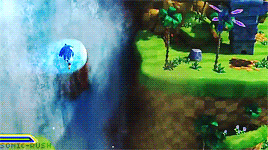
Audience and competitive analysis
The main audience will be people who are willing to put effort into getting better at a game to beat it and want a challenging but fair experience. People who struggle with precise timing and fast reactions in a game may not be as interested.
There is definitely a market for challenging skill-based single-player games whether they are viral games like Getting Over it with Bennett Foddy (2017), or Jump King (2019), or mainstay titles like the Soulsborne series of games, Super Meat Boy, Cuphead, N++, Celeste and so on. I believe players who enjoy these kinds of games will enjoy Overdrive for similar reasons.
Game treatment & concept art
The visuals of Overdrive will be kept minimalistic to ensure clarity during all the fast movements and so that each element of the game world is instantly recognizable. An artstyle consisting mostly of solid coloured objects and simple shapes will be used, similar to N++. All the complexity of this game should come from its character control and level design, so everything from the player to the interactable objects will be simple visually. A nice color palette and some subtle post-processing will tie everything together, as well as snappy sound design and background music to match the pace and energy of the game.
These three images below (from N++ store page on Nintendo Switch) illustrate the level of simplicity I will aim for.
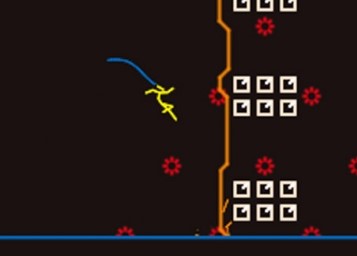
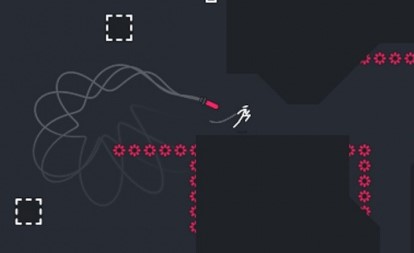
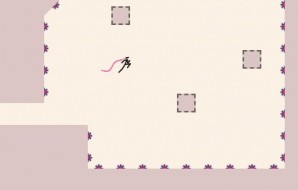
An important aspect of this game will be setting an appropriate difficulty curve in the level design.
The player will be met initially with a tutorial level that tests the most basic abilities:
- Running
- Jumping to reach a higher ground elevation
- Jumping to cross a gap.
- Wall jumping to reach an even higher elevation
- Homing attack floating orbs
- Grappling from ceilings to cross gaps
Once the player has learned all the basics in a forgiving environment that does not punish failure, hazards will be introduced that send the player back to the beginning of the level when touched. From here on, each level will require more precision and skill to complete. Hazards will just be glowing red surfaces or shapes representing a lava-like material.
Each movement ability should be able to transition smoothly into another maintaining momentum for many level design possibilities and a fun gameplay experience.
Levels will be ideally over a minute long each with at least 3 or 4 levels total. Levels will be large enough that a following camera will be necessary and enough space will be left ahead of the player so that incoming obstacles can be recognized in time to react.
A timer will be displayed at the top of the screen as part of the graphical user interface and upon completing a level, the player's completion time will be displayed before they choose to proceed to the next level. This is common in most Sonic games.
Below is an example taken from Sonic Frontiers (2022), where the player can see their current time and is shown their results afterwards.
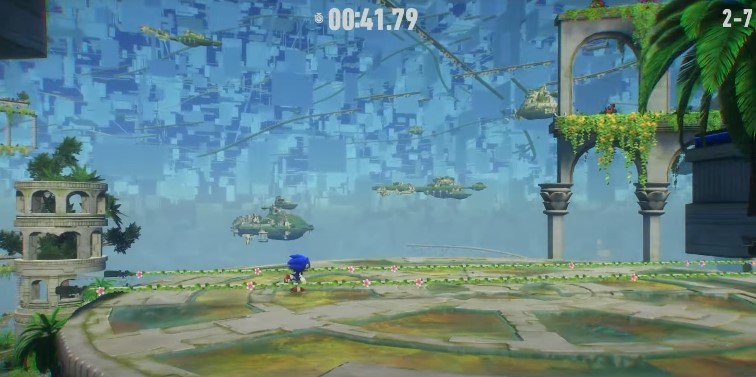
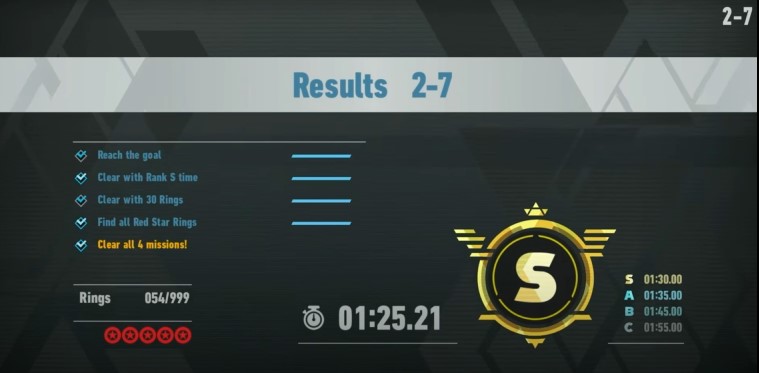
References
SpeedRunners gif - https://fullsync.co.uk/speedrunners-is-now-out-on-nintendo-switch/
Homing attack gif - https://aawesomepenguin.tumblr.com/post/158535865109/the-homing-attack-allows-th...
N++ screenshots - https://www.nintendo.com/store/products/n-nplusplus-switch/
Sonic frontiers screencaps -
OVERDRIVE V1.0
Acrobatic Platformer
| Status | Released |
| Author | Frenzy99 |
| Genre | Platformer, Action |
| Tags | 2D, Difficult, Fast-Paced, Minimalist, Short, Side Scroller, Singleplayer, Unity |
More posts
- Checkpoint 6 - TestingMay 30, 2023
- User Guide & DocumentationMay 27, 2023
- Checkpoint 5 - UI and PolishMay 23, 2023
- Checkpoint 4 - Presentation + GraphicsMay 15, 2023
- Checkpoint 3 - Enemies, Interaction, PuzzlesMay 08, 2023
- Checkpoint 2 - Basic level blocking + More movementMay 02, 2023
- Checkpoint 1 - Basic MovementApr 23, 2023
Leave a comment
Log in with itch.io to leave a comment.